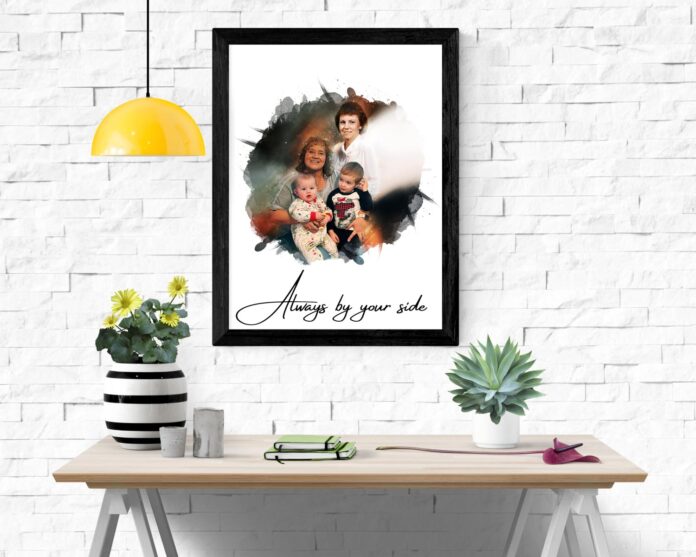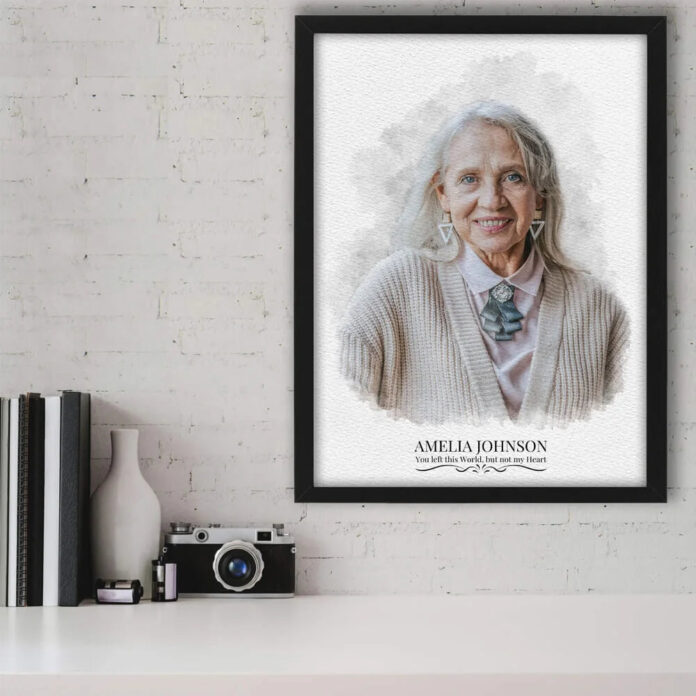Memorial portraits have long been recognized for their profound impact on the healing process. By capturing the essence of a loved one through art, these portraits provide comfort, solace, and a tangible connection to the deceased. In this article, we explore the concept of memorial portraits, examine the therapeutic power of art, discuss the process of creating these portraits, and contemplate their impact on grief and healing. Finally, we look ahead to the growing acceptance of art as a healing tool.
What are Memorial Portraits?

Memorial portraits are artistic renditions created to honor and remember loved ones who have passed away. These portraits serve as a poignant tribute, capturing the essence and memory of the departed in a visual medium. Today, platforms like Memorialize Art have elevated the significance of these portraits, offering meticulously crafted artworks that not only pay homage to the deceased but also serve as a lasting keepsake for families. Through their masterful creations, Memorialize Art ensures that cherished memories live on in a tangible and heartfelt manner.
What is the Therapeutic Power of Art?
Art has long been recognized for its therapeutic benefits. In the realm of grief and healing, art provides a powerful avenue for emotional expression, fostering self-reflection, and facilitating the processing of complex emotions.
Art Therapy: An Overview
Art therapy involves the use of artistic mediums and techniques to promote psychological and emotional well-being. By engaging in creative processes, individuals can explore their inner world, express themselves without words, and tap into their innate creativity.
Art therapy can take various forms, including painting, drawing, sculpture, and collage. It is often utilized as a complementary therapy alongside traditional counseling or medical treatment, fostering self-awareness, personal growth, and healing.
What is the Connection Between Art and Emotion?
Art has a unique ability to evoke emotions and tap into the depths of the human experience. Whether creating or viewing art, it can elicit powerful and cathartic responses. This connection between art and emotion can be particularly beneficial for those grieving the loss of a loved one.
Through the creation of memorial portraits, individuals can channel their grief, honor their emotions, and find solace in the act of making art. The process of art-making becomes a form of therapy, providing an outlet for expression and allowing for a deeper exploration of one’s feelings.
How Do Artists Go About Crafting Memorial Portraits?

Creating a memorial portrait is a deeply personal and emotional journey. From choosing the right medium to navigating the complexities of grief, every step of the process holds significance and meaning.
Choosing the Right Medium for Memorial Portraits
The choice of medium for a memorial portrait is a deeply personal decision. Different mediums offer unique qualities and visual aesthetics, allowing artists to capture the essence of the deceased in their own distinct style.
Oil paintings, for example, provide a sense of timelessness and richness, while watercolors can evoke a sense of ephemeral beauty. Digital portraits offer versatility and the ability to incorporate photographs or other digital elements.
Ultimately, the choice depends on the artist’s skill, the vision for the piece, and the emotional resonance of the medium itself.
The Emotional Journey of Creating a Memorial Portrait
Creating a memorial portrait is much more than a technical exercise; it is an emotional journey for both the artist and those commissioning the work. As the artist brings the portrait to life, they navigate complex emotions, empathizing with the grief of the bereaved and capturing the essence of the deceased.
The process of creating a memorial portrait can be therapeutic for both the artist and the individuals commissioning the work, providing a safe space for reflection, emotional release, and the celebration of a life well-lived.
What is the Impact of Memorial Portraits on Grief and Healing?

Memorial portraits have a profound impact on the grieving process. They offer a tangible connection to the deceased, facilitating emotional expression and providing a source of comfort during times of bereavement.
How Memorial Portraits Facilitate Emotional Expression
Words often fall short when trying to convey the depth of grief and loss. In these moments, memorial portraits become a powerful means of emotional expression. The visual representation allows individuals to externalize their emotions, giving them form and substance.
Through the act of looking at the portrait, individuals can engage in a dialogue with their emotions, reflecting on their feelings, and finding solace in the shared experience of grief.
Memorial Portraits as a Tangible Connection to the Deceased
When a loved one passes away, the longing for their presence can be overwhelming. Memorial portraits offer a tangible connection to the deceased, bridging the gap between the physical and spiritual realms.
These portraits become cherished mementos, allowing individuals to feel the presence of their loved ones, sparking memories, and fostering a sense of continuity. In a way, the portrait becomes a portal to the past, a vessel for remembrance, and a source of comfort in the present.

Conclusion
In conclusion, memorial portraits offer a powerful means of solace and healing in the face of loss. By understanding their concept, exploring their history and cultural significance, and recognizing art’s therapeutic power, we gain insight into the transformative impact of these portraits. As we navigate the process of creating memorial portraits and contemplate their lasting impact on grief and healing, we witness the profound capacity for art to aid in our journey towards finding solace in paint.






